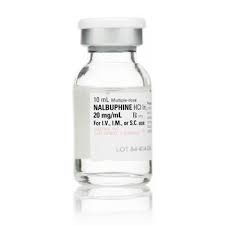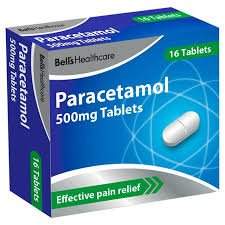Description
What is Nalbuphine Injection?
Nalbuphine Injection is an injectable form of Nalbuphine, a semi-synthetic opioid that works by blocking pain signals in the brain and spinal cord. It is often used in clinical settings such as hospitals or surgical environments for moderate to severe pain relief.
Nalbuphine is commonly administered via intravenous (IV) or intramuscular (IM) injection, depending on the clinical scenario. Its unique receptor profile (partial agonist at mu-opioid receptors and full agonist at kappa-opioid receptors) differentiates it from other opioids, providing effective analgesia with a lower risk of certain side effects like respiratory depression.
Uses of Nalbuphine Injection
Nalbuphine Injection is used in a variety of clinical situations where effective pain management is required. Some of the most common uses include:
- Postoperative Pain Management:
- One of the primary uses of Nalbuphine Injection is to manage pain after surgery. It provides fast and reliable pain relief for patients recovering from procedures such as abdominal surgeries, orthopedic surgeries, or gynecological procedures. Nalbuphine’s ability to relieve pain without significant sedation makes it ideal for postoperative care.
- Labor Pain:
- Nalbuphine Injection is also used during labor to help manage moderate pain. It can be administered intravenously during childbirth to provide temporary pain relief, allowing the mother to remain conscious and alert without the use of an epidural or general anesthesia.
- Acute Pain:
- Nalbuphine Injection is commonly used in emergency rooms or acute care settings to treat severe pain caused by trauma, burns, or injury. Its fast onset of action helps control pain effectively in situations requiring quick intervention.
- Cancer Pain:
- In oncology settings, Nalbuphine Injection may be used to manage moderate to severe pain in cancer patients who have not responded well to non-opioid analgesics or other pain management methods. It provides an alternative to traditional opioids with a potentially lower risk of abuse.
Mechanism of Action
Nalbuphine Injection works through its interaction with the opioid receptors in the central nervous system (CNS). Its unique pharmacological profile allows it to provide pain relief with some distinct advantages over other opioids:
- Kappa-Opioid Receptor Agonist:
- Nalbuphine primarily acts as an agonist at kappa-opioid receptors, which are involved in producing analgesia (pain relief). By stimulating these receptors, Nalbuphine effectively reduces pain perception, providing relief for patients in acute pain situations.
- Mu-Opioid Receptor Antagonism:
- Unlike many opioids, Nalbuphine acts as a partial antagonist at the mu-opioid receptors, the receptors typically targeted by opioids like morphine and oxycodone. This partial antagonism limits some of the typical side effects of opioids, particularly respiratory depression, which can be life-threatening in high doses.
- Ceiling Effect:
- One of the most notable features of Nalbuphine is its ceiling effect. This means that beyond a certain dose, increasing the amount of Nalbuphine will not enhance its analgesic effects or increase side effects. This characteristic reduces the risk of overdose and makes it safer compared to other opioids.
Benefits of Nalbuphine Injection
- Effective Pain Relief:
- Nalbuphine provides reliable and potent pain relief, making it effective for managing moderate to severe pain. It is fast-acting and works quickly, especially when administered intravenously, allowing for prompt relief in acute pain scenarios.
- Lower Risk of Respiratory Depression:
- Because Nalbuphine is a mu-opioid receptor partial antagonist, it carries a lower risk of respiratory depression compared to other opioids. This makes it safer for use, particularly in elderly patients, patients with compromised respiratory function, or during labor.
- Reduced Risk of Abuse and Addiction:
- Nalbuphine has a lower potential for abuse than traditional opioids due to its ceiling effect on euphoria. Since higher doses do not significantly increase its effects, it is less likely to be misused, which reduces the risk of addiction and overdose.
- Non-Sedating:
- Unlike many opioids, Nalbuphine provides pain relief without causing significant sedation or drowsiness. This allows patients to remain awake and alert, which is particularly useful in postoperative recovery or labor when patients need to be active and engaged.
- Versatility:
- Nalbuphine Injection can be used in a range of clinical settings, including emergency departments, surgical recovery rooms, and labor and delivery units. Its fast onset and efficacy make it versatile for treating various types of acute and moderate pain.
Side Effects of Nalbuphine Injection
While Nalbuphine Injection is generally well-tolerated, like all medications, it can cause side effects. Some common and serious side effects include:
Common Side Effects:
- Dizziness or lightheadedness
- Drowsiness
- Nausea or vomiting
- Sweating
- Headache
- Dry mouth
- Constipation
Serious Side Effects:
- Respiratory depression (especially in high doses or when combined with other CNS depressants)
- Severe allergic reactions such as rash, itching, or swelling, particularly around the face and throat
- Hypotension (low blood pressure)
- Bradycardia (slow heart rate)
- Confusion or hallucinations (in some cases)
- Severe drowsiness or sedation
- Seizures (in rare instances)
Contraindications and Precautions
- Hypersensitivity:
- Nalbuphine should not be administer to patients with known hypersensitivity or allergy to Nalbuphine or other opioids.
- Respiratory Depression:
- Although Nalbuphine has a ceiling effect on respiratory depression, it should still be use cautiously in patients with respiratory disorders, such as asthma or COPD, or in elderly patients who may be more susceptible to respiratory complications.
- Pregnancy and Breastfeeding:
- Nalbuphine is classify as Category C for pregnancy, meaning it should only be use during pregnancy if the potential benefits outweigh the risks. Nalbuphine may pass into breast milk, so caution is advise when administering the drug to breastfeeding mothers.
- Liver or Kidney Disease:
- Patients with severe liver or kidney disease should be carefully monitor when receiving Nalbuphine, as these conditions can affect the metabolism and elimination of the drug.
- Drug Interactions:
- Nalbuphine can interact with other central nervous system depressants, such as benzodiazepines, alcohol, or other opioids. Combining Nalbuphine with these substances can increase the risk of sedation, respiratory depression, or overdose.
Dosage and Administration
Nalbuphine Injection is typically administer intravenously (IV) or intramuscularly (IM). The dose will depend on the patient’s specific condition, age, and response to treatment. For example:
- For acute pain: A typical initial dose for adults is 10 to 20 mg, which may be repeated every 3 to 6 hours as need.
- For labor pain: Nalbuphine can be administer in doses of 10 mg IV every 3 to 6 hours, depending on the patient’s needs.
The exact dosage and frequency should be determine by a healthcare provider based on individual patient factors.
Conclusion
Nalbuphine Injection is a powerful and effective opioid analgesic that provides moderate to severe pain relief with a lower risk of respiratory depression and addiction compared to other opioids. Its unique pharmacological properties make it a versatile and safer option for managing pain in a variety of clinical settings, including postoperative recovery, labor, and acute trauma pain.






Reviews
There are no reviews yet.